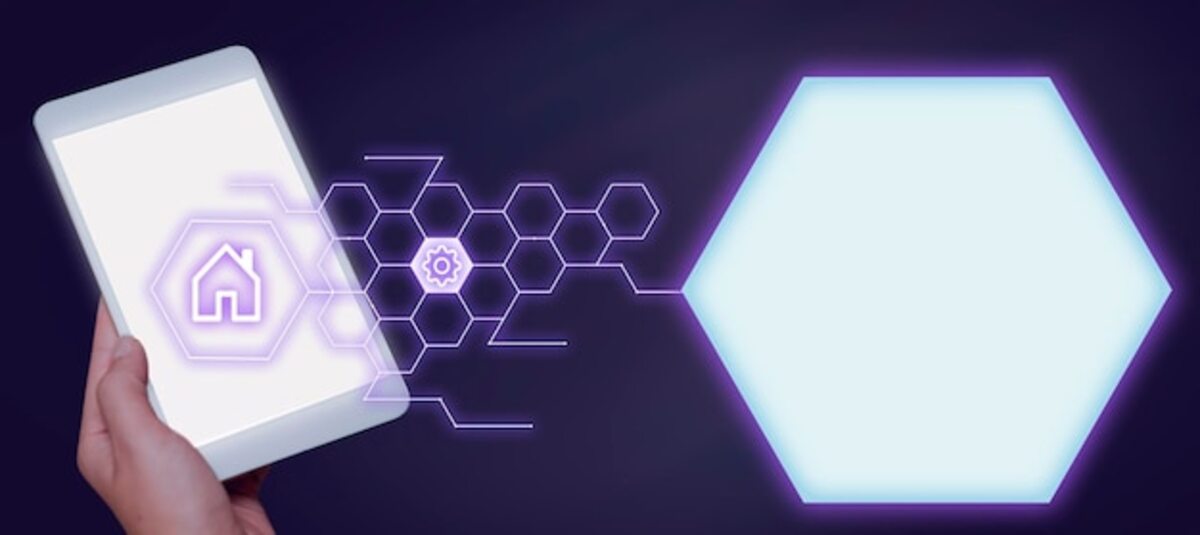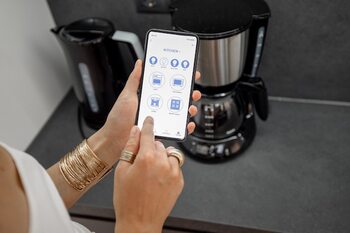Enhance your home security with advanced network technology.

Strengthen the security of your home with advanced network technology. In a world where connectivity is key, protecting your personal space has never been more crucial. Advanced network technology not only simplifies our lives but also offers effective solutions to keep your family and belongings safe. From smart cameras to interconnected alarm systems, discover how these tools can provide you with peace of mind and total control over your home security. Don't wait any longer to take the next step towards a safer environment!
The importance of security in the modern home
Home security in the modern era is a fundamental aspect that cannot be underestimated. With the increase in connectivity and technology, security threats have also evolved, making it necessary to adopt more sophisticated and effective measures. The implementation of advanced security systems allows homeowners not only to protect their properties but also to have complete control over who enters and exits their home. This creates an environment where peace of mind prevails, allowing families to enjoy their time together without unnecessary worries.
Moreover, the importance of security in the modern home goes beyond simple protection against theft; it is also about safeguarding our loved ones. Current technologies offer integrated solutions that allow monitoring of suspicious activities in real time from anywhere in the world. This means you can stay aware of what is happening in your home even when you are away, thanks to mobile apps and connected devices. In this sense, investing in advanced technology for the home is not only a smart decision but also an investment in emotional well-being and peace of mind for you and your family.
What is advanced networking technology?
Advanced networking technology refers to a set of tools and systems that enable the efficient interconnection of devices in the home, facilitating communication between them. This includes solutions such as high-speed Wi-Fi networks, secure communication protocols, and smart devices that can be controlled through mobile applications. This integration not only optimizes the operation of appliances and home systems but also allows for more effective management of security measures. With connected devices, homeowners can monitor their home in real-time from anywhere in the world, thereby increasing protection against intrusions or emergencies.
Additionally, advanced networking technology incorporates features such as artificial intelligence and machine learning to enhance the effectiveness of security solutions. For example, smart cameras can identify unusual patterns in behavior and alert you to suspicious activities, while interconnected alarm systems can coordinate automatic responses to critical situations. In this way, it's not just about having a reactive system against threats, but also a proactive approach to anticipate potential risks. Adopting this technology is a significant step towards a safer and more secure environment for you and your family.
3. Essential devices for a safe home
To ensure the safety of your home, it is essential to have devices that work together and integrate seamlessly into an advanced network system. Smart security cameras are a key investment; they not only allow you to monitor your spaces in real-time from anywhere through your smartphone, but they can also send instant alerts in the event of suspicious movements. With night vision capabilities and continuous recording, they provide a complete view of what happens inside and outside your home, offering peace of mind even when you are not present.
In addition to cameras, interconnected alarm systems are essential for comprehensive home protection. These devices detect intrusions and can be programmed to activate sirens or automatically notify emergency services. Integration with mobile applications allows control of the system from anywhere in the world, ensuring that you are always aware of your home's security. Completing this network with motion and door sensors can provide an additional level of protection, creating a safe and connected environment that responds quickly to any threat.
4. How to choose the right surveillance system
When choosing a suitable surveillance system for your home, it is essential to consider several factors that align with your specific needs. First, assess the size of your property and the most vulnerable access points. If you live in a large house, a system that includes multiple cameras with night vision and motion detection may be essential to cover all critical areas. On the other hand, if you live in an apartment, a compact yet effective system might be sufficient. Additionally, the ability to access images in real-time through a mobile app is a feature you shouldn't overlook; it will allow you to monitor your home from anywhere.
Another key aspect is the integration of the system with other smart devices you already have at home. Choosing cameras and alarms that are compatible with voice assistants or smart home platforms will provide you with smoother and more efficient control. Don't forget to research video quality and cloud storage options; these elements are crucial to ensure that you have access to important recordings when needed. Finally, also consider the technical support and warranty of the product; having good customer service can make a big difference if problems arise or you need assistance with the initial setup of the system.
5. Smart home integration: connecting all your devices
The integration of devices in a smart home system is one of the most effective ways to enhance your home security. By connecting surveillance cameras, motion sensors, smart locks, and alarms to a single network, you can monitor and control every aspect of security from the palm of your hand. Mobile applications allow you to receive real-time notifications about any suspicious activity, as well as access live images from your cameras, providing a quick response to potential incidents. This interconnection not only optimizes security but also offers centralized control that simplifies daily management.
Additionally, intelligent systems can be programmed to work together and create personalized scenarios that fit your specific needs. For example, you can set your smart lock to activate automatically when you leave the house or program the outdoor lights to turn on when motion is detected at night. This type of automation not only deters potential intruders by simulating activity inside the home but also enhances your comfort and peace of mind knowing that you have taken proactive steps to protect what you value most. Smart home integration transforms your home into a safe and intelligent space where each device collaborates to provide you with greater protection and peace of mind.
6. Advantages of real-time remote monitoring
Real-time remote monitoring has become an essential tool for home security, offering homeowners unprecedented control over their spaces. Thanks to cameras and alarm systems that connect to the Internet, you can view what is happening in your home from anywhere in the world through your smartphone or computer. This capability not only allows you to verify that everything is in order when you are away, but also serves as a powerful deterrent against potential intruders. Knowing they are being watched, many criminals think twice before attempting to enter a property.
In addition to enhancing security, remote monitoring also provides great emotional peace of mind. Knowing that you can access live images and receive instant alerts about any suspicious activity allows you to act quickly if necessary. This not only protects your material possessions but also safeguards the well-being of your loved ones. The ability to interact with your home from afar, whether to speak with a visitor or activate an alarm, transforms the way you perceive personal and family security. Ultimately, investing in remote monitoring technologies is a solid step towards a safer and more secure environment.
7. Tips to improve cybersecurity in your home
Home cybersecurity is a fundamental aspect that is often overlooked. With the growing number of Internet-connected devices, such as security cameras, smart thermostats, and voice assistants, each of them can be a gateway for cybercriminals. To improve cybersecurity in your home, start by changing the default passwords of all your devices to unique and complex combinations. Additionally, make sure to enable two-factor authentication whenever possible, which adds an extra layer of protection by requiring an additional code to access your accounts.
Another crucial piece of advice is to keep the firmware of your devices up to date. Manufacturers frequently release updates that fix vulnerabilities and improve the overall security of the system. It is also important to segment your home network: consider creating a separate network just for your IoT (Internet of Things) devices, thus keeping your computers and other more sensitive devices on another protected network. Implementing these measures will not only protect your personal information but also ensure that your home is safeguarded against potential digital threats.
8. Future of home security: trends and predictions
As technology advances, the future of home security is shaping up as a constantly evolving field. Current trends point towards the increasing use of artificial intelligence and machine learning to enhance threat identification and reduce false positives. This means that security systems will not only be more efficient but also smarter, continuously adapting to the specific needs of the home and the routines of its inhabitants. Furthermore, the integration of IoT (Internet of Things) devices will allow for seamless communication between different appliances, creating an interconnected ecosystem where each component works together to provide comprehensive protection.
Another prominent trend is the personalization and accessibility provided by cloud-based platforms. These services allow users to access their security system from anywhere in the world through mobile applications, giving them total control over their home in real time. Additionally, an increase in the use of biometric technologies is expected to ensure more secure and personalized access. In this context, it is essential for homeowners to stay informed about these innovations to adapt their security systems to new technological realities and thus ensure a more protected and reliable environment for their family.



